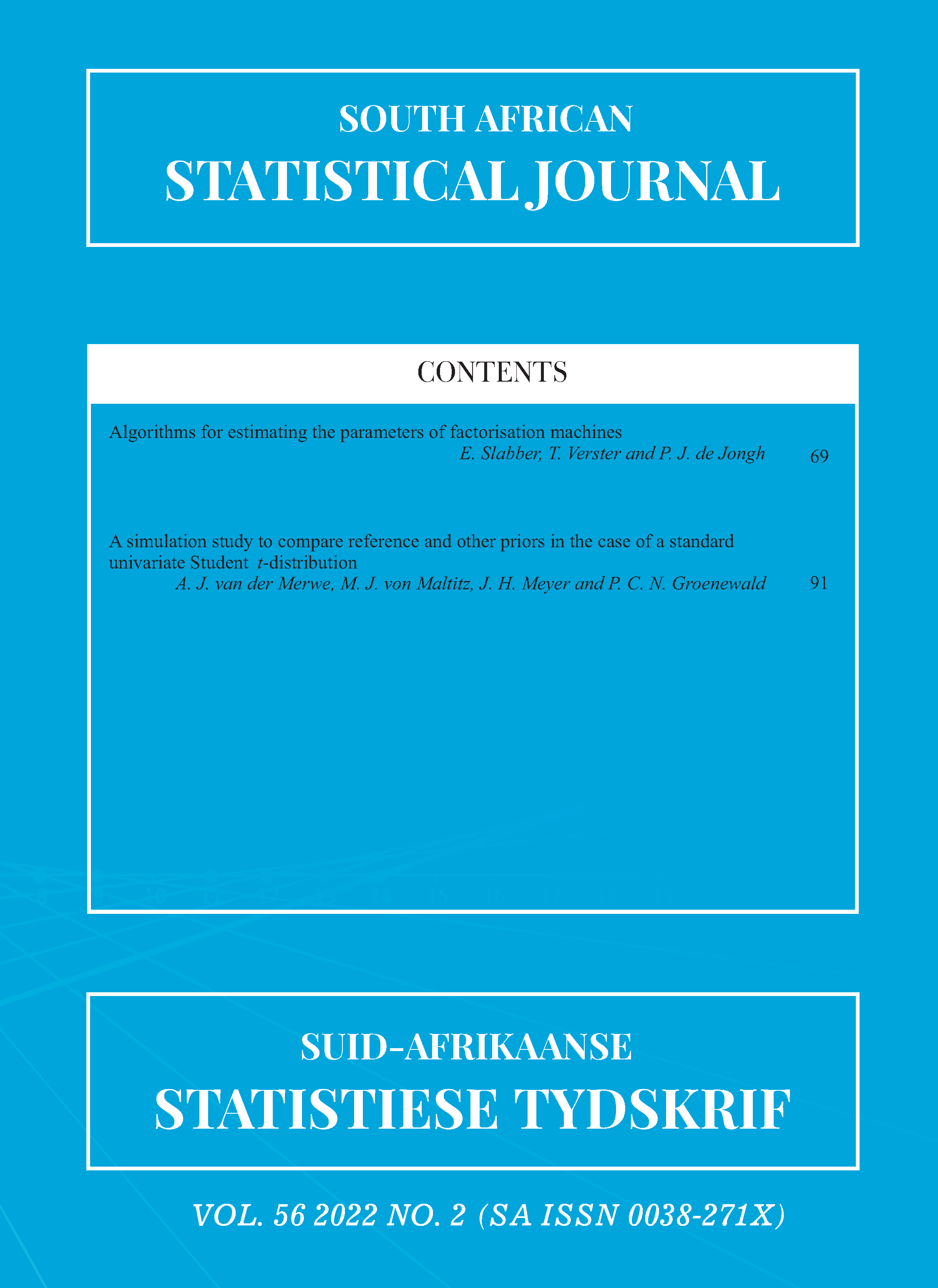Algorithms for estimating the parameters of factorisation machines
DOI:
https://doi.org/10.37920/sasj.2022.56.2.1Keywords:
Factorisation machines, Fitting algorithms, Parameter estimationAbstract
Since the introduction of factorisation machines in 2010, it became a popular prediction technique amongst machine learners who applied the method with success in several data science challenges such as Kaggle or KDD Cup. Despite these successes, factorisation machines are not often considered as a modelling technique in business, partly because large companies prefer tried and tested software for model implementation. Popular modelling techniques for prediction problems, such as generalised linear models, neural networks, and classification and regression trees, have been implemented in commercial software such as SAS which is widely used by banks, insurance, pharmaceutical and telecommunication companies. To popularise the use of factorisation machines in business, we implement algorithms for fitting factorisation machines in SAS. These algorithms minimise two loss functions, namely the weighted sum of squared errors and the weighted sum of absolute deviations using coordinate descent and nonlinear programming procedures. Using a simulation study, the above-mentioned routines are tested in terms of accuracy and efficiency. The prediction power of factorisation machines is then illustrated by analysing two data sets.

